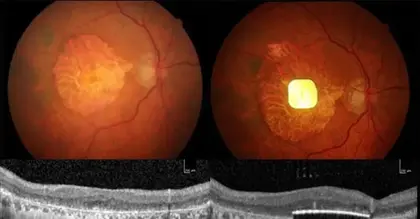Note: This document contains side effect information about imatinib. Some dosage forms listed on this page may not apply to the brand name Gleevec.
Applies to imatinib: oral tablets.
Side effects include:
Adverse effects reported in ≥30% of patients were edema, nausea, vomiting, muscle cramps, musculoskeletal pain, diarrhea, rash, fatigue, and abdominal pain.
For Healthcare Professionals
Applies to imatinib: oral capsule, oral tablet.
Cardiovascular
Uncommon (0.1% to 1%): Cerebral hemorrhage, palpitations, tachycardia, congestive heart failure, pulmonary edema, hypertension, peripheral coldness, hypotension, Raynaud's phenomenon, chest pain
Rare (less than 0.1%): Increased intracranial pressure, arrhythmia, atrial fibrillation, cardiac arrest, myocardial infarction, angina pectoris, pericardial effusion
Frequency not reported: Cerebral edema, pericarditis, cardiac tamponade[Ref]
Dermatologic
Very common (10% or more): Dermatitis/eczema/rash (40%)
Common (1% to 10%): Flushing, pruritus, face edema, dry skin, erythema, alopecia, night sweats, photosensitivity reaction
Uncommon (0.1% to 1%): Rash pustular, contusion, sweating increased, urticaria, ecchymosis, increased tendency to bruise, hypotrichosis, skin hypopigmentation, dermatitis exfoliative, onychoclasis, folliculitis, petechiae, psoriasis, purpura, skin hyperpigmentation, bullous eruptions
Rare (less than 0.1%): Acute febrile neutrophilic dermatosis (Sweet's syndrome), nail discoloration, angioneurotic edema, rash vesicular, erythema multiforme, leukocytoclastic vasculitis, Stevens-Johnson syndrome, acute generalized exanthematous pustulosis (AGEP)
Frequency not reported: Palmoplantar erythrodysesthesia syndrome, lichenoid keratosis, lichen planus, toxic epidermal necrolysis (TEN), drug rash with eosinophilia and systemic symptoms (DRESS)[Ref]
Gastrointestinal
Very common (10% or more): Nausea (50%), diarrhea (45%), abdominal pain (37%), constipation (11%), vomiting, dyspepsia
Common (1% to 10%): Flatulence, abdominal distension, gastroesophageal reflux, dry mouth, gastritis
Uncommon (0.1% to 1%): Gastroenteritis, stomatitis, mouth ulceration, gastrointestinal hemorrhage, eructation, melena, esophagitis, ascites, gastric ulcer, hematemesis, cheilitis, dysphagia, pancreatitis
Rare (less than 0.1%): Colitis, ileus, inflammatory bowel disease
Frequency not reported: Ileus/intestinal obstruction, gastrointestinal perforation, diverticulitis, gastric antral vascular ectasia (GAVE)[Ref]
Genitourinary
Uncommon (0.1% to 1%): Urinary tract infection, gynecomastia, erectile dysfunction, menorrhagia, menstruation irregular, sexual dysfunction, nipple pain, breast enlargement, scrotal edema
Rare (less than 0.1%): Hemorrhagic corpus luteum/hemorrhagic ovarian cyst[Ref]
Hematologic
Very common (10% or more): Hemorrhage (29%), neutropenia, thrombocytopenia, anemia
Common (1% to 10%): Pancytopenia, febrile neutropenia, hemorrhage
Uncommon (0.1% to 1%): Thrombocythemia, lymphopenia, bone marrow depression, eosinophilia, lymphadenopathy, hematoma, subdural hematoma
Rare (less than 0.1%): Hemolytic anemia
Frequency not reported: Thrombosis/embolism[Ref]
Hepatic
Common (1% to 10%): Increased hepatic enzymes
Uncommon (0.1% to 1%): Hyperbilirubinemia, hepatitis, jaundice
Rare (less than 0.1%): Hepatic failure, hepatic necrosis[Ref]
Hypersensitivity
Frequency not reported: Anaphylactic shock[Ref]
Immunologic
Very common (10% or more): Influenza (14%)
Uncommon (0.1% to 1%): Herpes zoster, herpes simplex, cellulitis, sepsis
Rare (less than 0.1%): Fungal infection
Frequency not reported: Hepatitis B reactivation[Ref]
Metabolic
Very common (10% or more): Weight gain (16%)
Common (1% to 10%): Anorexia, weight loss
Uncommon (0.1% to 1%): Hypokalemia, increased appetite, hypophosphatemia, dehydration, gout, hyperuricemia, hypercalcemia, hyperglycemia, hyponatremia, blood creatinine increased, blood creatine phosphokinase increased, blood lactate dehydrogenase increased, blood alkaline phosphatase increased
Rare (less than 0.1%): Hyperkalemia, hypomagnesemia, blood amylase increased[Ref]
Musculoskeletal
Very common (10% or more): Muscle spasm/cramps (49%), musculoskeletal pain (47%), joint pain (31%), myalgia (24%), bone pain (11%)
Common (1% to 10%): Joint swelling
Uncommon (0.1% to 1%): Joint and muscle stiffness
Rare (less than 0.1%): Muscular weakness, arthritis, rhabdomyolysis/myopathy
Frequency not reported: Avascular necrosis/hip necrosis, growth retardation in children[Ref]
Nervous system
Very common (10% or more): Headache (37%), dizziness (19%)
Common (1% to 10%): Paresthesia, hypoesthesia
Uncommon (0.1% to 1%): Migraine, syncope, peripheral neuropathy, sciatica, restless leg syndrome, tremor, vertigo
Rare (less than 0.1%): Seizures[Ref]
Ocular
Very common (10% or more): Periorbital edema
Common (1% to 10%): Eyelid edema, lacrimation increased, conjunctival hemorrhage, conjunctivitis, dry eye, blurred vision
Uncommon (0.1% to 1%): Eye irritation, eye pain, orbital edema, scleral hemorrhage, retinal hemorrhage, blepharitis, macular edema
Rare (less than 0.1%): Optic neuritis, cataract, glaucoma, papilledema
Frequency not reported: Vitreous hemorrhage[Ref]
Oncologic
Rare (less than 0.1%): Tumor lysis syndrome
Frequency not reported: Tumor hemorrhage, tumor necrosis[Ref]
Other
Very common (10% or more): Fluid retention/edema (62%, fatigue (39%), pyrexia (18%)
Common (1% to 10%): Taste disturbance, weakness, pyrexia, anasarca, chills, rigors
Uncommon (0.1% to 1%): Tinnitus, hearing loss, malaise[Ref]
Psychiatric
Very common (10% or more): Insomnia (15%), depression (15%)
Uncommon (0.1% to 1%): Anxiety, somnolence, memory impairment
Rare (less than 0.1%): Confusional state[Ref]
Renal
Uncommon (0.1% to 1%): Renal pain, hematuria, renal failure acute, urinary frequency increased
Frequency not reported: Chronic renal failure[Ref]
Respiratory
Very common (10% or more): Nasopharyngitis (31%), cough (20%), upper respiratory tract infection (20%), pharyngolaryngeal pain (18%), sinusitis (11%)
Common (1% to 10%): Dyspnea, epistaxis
Uncommon (0.1% to 1%): Pneumonia, pleural effusion, pharyngitis
Rare (less than 0.1%): Pleuritic pain, pulmonary fibrosis, pulmonary hypertension, pulmonary hemorrhage
Frequency not reported: Acute respiratory failure, interstitial lung disease[Ref]




